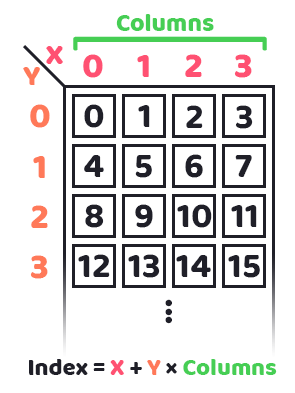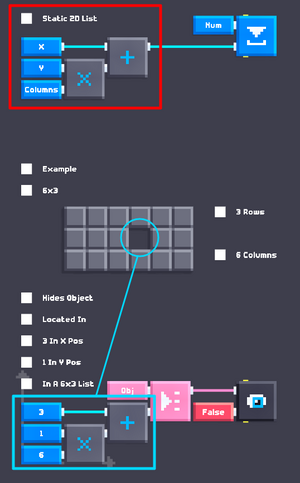2D lists: Difference between revisions
(Added a link to the List page) |
(Improved wording) Tags: Mobile edit Mobile web edit |
||
| Line 1: | Line 1: | ||
'''Two-dimensional [[list]]''' is | '''Two-dimensional [[list]]''' is often used in creating a game that involves a board or a grid such as [[Chess]], [[Reversi]], Checkers, Tetris, Battleship, [[1024|2048]] and so on. | ||
In a technical term, 2D list is called as an '''array of arrays''' or also known as a '''matrix''' which can be represented as a table of columns and rows. | In a technical term, 2D list is called as an '''array of arrays''' or also known as a '''matrix''' which can be represented as a table of columns and rows. | ||
Latest revision as of 19:08, 26 July 2025
Two-dimensional list is often used in creating a game that involves a board or a grid such as Chess, Reversi, Checkers, Tetris, Battleship, 2048 and so on.
In a technical term, 2D list is called as an array of arrays or also known as a matrix which can be represented as a table of columns and rows.
The way List Element functions do not provide a convenient way of creating such. Beginners are sometimes misled that plugging the Element input from the output of another List Element works. But fear not, for there is a simple workaround to make it by using simple math. See image below on how to make it!

Variables:
- X: the index column of a 2D list. It must be noted that this value must not be greater than Columns nor be lesser than 0, as it may read the wrong value.
- Y: the index row of a 2D list. A value lesser than 0 produce a sentinel value equivalent to
None, which may be useful if all - Columns: the total columns of a 2D list.
